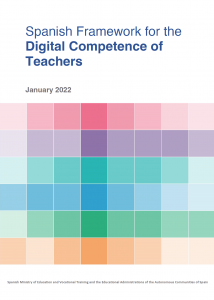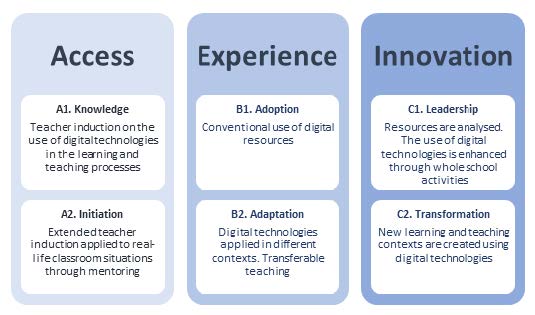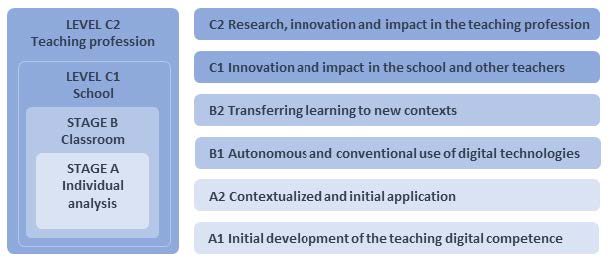The Spanish Framework for the Digital Competence of Teachers (SFDCT) presented in this post is the result of the joint work carried out during 2021 in the technical Spanish Learning Technology Working Group (GTTA). This working group was made up of representatives from all Educational Administrations in Spain who collaborated on the revision and update of the previous framework. SFDCT was approved as the Resolution of 4th May 2022 by the Spanish Directorate General of Evaluation and Territorial Cooperation. The Spanish Directorate published the Agreement of the Spanish Sectorial Conference on Education on the update of the Spanish Framework for the Digital Competence of Teachers.
SFDCT Framework
If you are not yet familiar with this document, we invite you to consult it for further information.

English translation of the updated Spanish Framework for the Digital Competence of Teachers
Description
SFDCT is based on the tasks carried by the teachers of education regulated by the Spanish Organic Law on Education. SFDCT is aligned with the European frameworks of digital competences for citizens, educators and educational organisations, developed by the Joint Research Centre of the European Commission. Specifically, this framework involves an adaptation of DigCompEdu in line with the stages of teacher professional development in Spain.
Structure
SFDCT employs the fundamental DigCompEdu structure in 6 areas while adapting key concepts and terms:
- Area 1. Professional engagement
- Area 2. Digital content
- Area 3. Teaching and Learning
- Area 4. Assessment and Feedback
- Area 5. Empowering learners
- Area 6. Developing the digital competence of learners
The 6 areas incorporate 23 digital competences, having created competence 1.5 which focuses on personal data protection, privacy, safety and well-being.
Progression model
SFDCT is based on a progression model structured in 3 stages and 2 levels of competence. These stages range from initial access to the profession to employing expert and innovative teaching practice, specifically in the case of using educational technologies as a tool to improve the learning of all pupils:

Illustration 4. Stages of progression and proficiency levels of the SFDCT. Spanish Learning Technologies Working Group (GTTA) for the revision of the SFDCT. Creative Commons BY-SA 4.0
Stages of progression and proficiency levels
Each of the stages comprises two proficiency levels, the characteristics of which are set out below:

Illustration 6. Stages of progression. Spanish Learning Technologies Working Group (GTTA) for the revision of the SFDCT. Creative Commons BY-SA 4.0
The SFDCT document incorporates numerous performance examples which showcase the typical activities at each proficiency level using an accessible format, optimising illustrations and applying a new colour palette to enhance its identity.

















